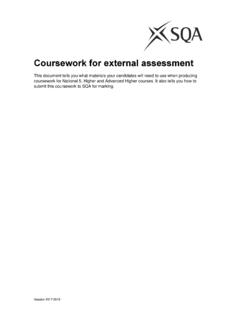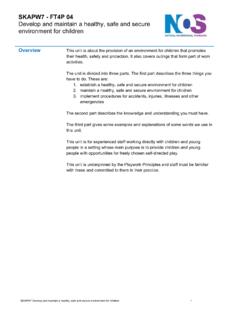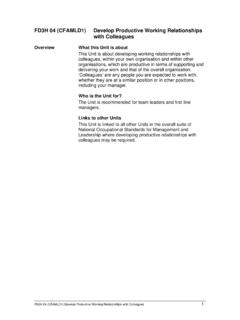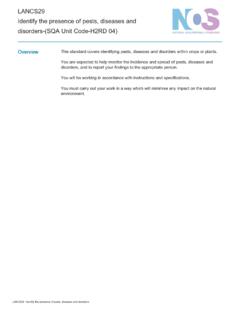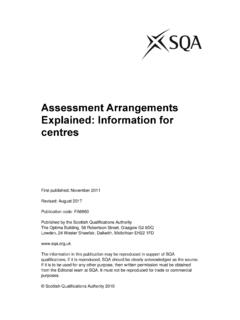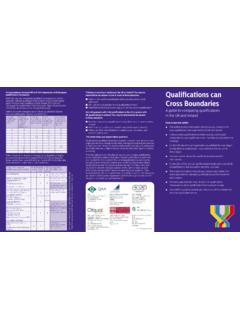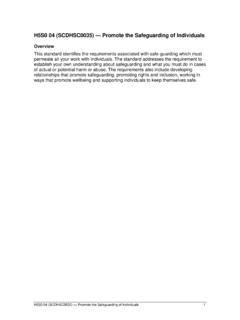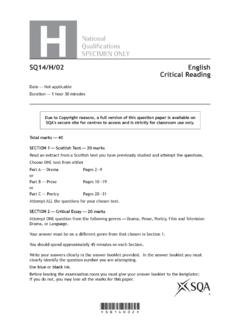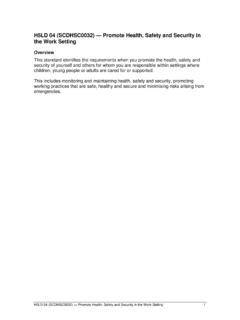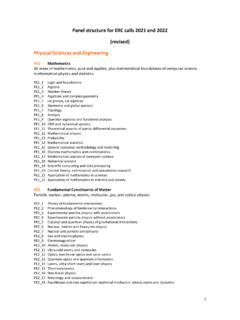Transcription of Higher Mathematics - SQA
1 Higher Mathematics Course code: C847 76. Course assessment code: X847 76. SCQF: level 6 (24 SCQF credit points). Valid from: session 2018 19. This document provides detailed information about the course and course assessment to ensure consistent and transparent assessment year on year. It describes the structure of the course and the course assessment in terms of the skills, knowledge and understanding that are assessed. This document is for teachers and lecturers and contains all the mandatory information you need to deliver the course. The information in this publication may be reproduced in support of SQA qualifications only on a non-commercial basis.
2 If it is reproduced, SQA must be clearly acknowledged as the source. If it is to be reproduced for any other purpose, written permission must be obtained from This edition: May 2018 (version ). Scottish Qualifications Authority 2013, 2018. Contents Course overview 1. Course rationale 2. Purpose and aims 2. Who is this course for? 2. Course content 3. Skills, knowledge and understanding 3. Skills for learning, skills for life and skills for work 9. Course assessment 10. Course assessment structure 10. Grading 11. Equality and inclusion 12. Further information 13. Appendix 1: course support notes 14.
3 Introduction 14. Approaches to learning and teaching 14. Preparing for course assessment 16. Developing skills for learning, skills for life and skills for work 16. Appendix 2: skills, knowledge and understanding with suggested learning and teaching contexts 19. Appendix 3: question paper brief 32. Course overview The course consists of 24 SCQF credit points which includes time for preparation for course assessment. The notional length of time for candidates to complete the course is 160 hours. The course assessment has two components. Component Marks Duration Component 1: question paper 1 70 1 hour and 30 minutes (non-calculator).
4 Component 2: question paper 2 80 1 hour and 45 minutes Recommended entry Progression Entry to this course is at the discretion of other qualifications in Mathematics or the centre. related areas, for example Advanced Higher Mathematics , Advanced Higher Candidates should have achieved the Mathematics of Mechanics, Advanced National 5 Mathematics course or Higher Statistics equivalent qualifications and/or experience further study, employment and/or prior to starting this course. training Conditions of award The grade awarded is based on the total marks achieved across all course assessment components.
5 Achievement of this course gives automatic certification of the following Core Skill: Numeracy at SCQF level 6. Version 1. Course rationale National Courses reflect Curriculum for Excellence values, purposes and principles. They offer flexibility, provide time for learning, focus on skills and applying learning, and provide scope for personalisation and choice. Every course provides opportunities for candidates to develop breadth, challenge and application. The focus and balance of assessment is tailored to each subject area. Mathematics engages learners of all ages, interests and abilities.
6 Learning Mathematics develops logical reasoning, analysis, problem-solving skills, creativity, and the ability to think in abstract ways. It uses a universal language of numbers and symbols, which allows us to communicate ideas in a concise, unambiguous and rigorous way. The course develops important mathematical techniques which are critical to successful progression beyond Higher level in Mathematics and many other curriculum areas. The skills, knowledge and understanding in the course also support learning in technology, health and wellbeing, science, and social studies.
7 Purpose and aims Mathematics is important in everyday life. It helps us to make sense of the world we live in and to manage our lives. Using Mathematics enables us to model real-life situations and make connections and informed predictions. It equips us with the skills we need to interpret and analyse information, simplify and solve problems, assess risk and make informed decisions. The course aims to: motivate and challenge candidates by enabling them to select and apply mathematical techniques in a variety of mathematical situations develop confidence in the subject and a positive attitude towards further study in Mathematics and the use of Mathematics in employment deliver in-depth study of mathematical concepts and the ways in which Mathematics describes our world allow candidates to interpret, communicate and manage information in mathematical form.
8 Skills which are vital to scientific and technological research and development deepen candidates' skills in using mathematical language and exploring advanced mathematical ideas Who is this course for? This course is particularly suitable for candidates who: have demonstrated an aptitude for National 5 Mathematics are interested in developing mathematical techniques to use in further study or in the workplace Version 2. Course content The Higher Mathematics course develops, deepens and extends the mathematical skills necessary at this level and beyond. Throughout this course, candidates acquire and apply operational skills necessary for developing mathematical ideas through symbolic representation and diagrams.
9 They select and apply mathematical techniques and develop their understanding of the interdependencies within Mathematics . Candidates develop mathematical reasoning skills and gain experience in making informed decisions. Skills, knowledge and understanding Skills, knowledge and understanding for the course The following provides a broad overview of the subject skills, knowledge and understanding developed in the course: understand and use a range of complex mathematical concepts and relationships select and apply operational skills in algebra, geometry, trigonometry, calculus and statistics within mathematical contexts select and apply skills in numeracy use mathematical reasoning skills to extract and interpret information and to use complex mathematical models use mathematical reasoning skills to think logically, provide justification or proof, and solve problems communicate mathematical information with complex features Version 3.
10 Skills, knowledge and understanding for the course assessment The following provides details of skills, knowledge and understanding sampled in the course assessment: Algebraic and trigonometric skills Skills Explanation Manipulating algebraic expressions factorising a cubic or quartic polynomial expression simplifying a numerical expression using the laws of logarithms and exponents Manipulating trigonometric applying the addition formulae and/or double expressions angle formulae applying trigonometric identities converting a cos x b sin x to k cos x or k sin x , k 0.
